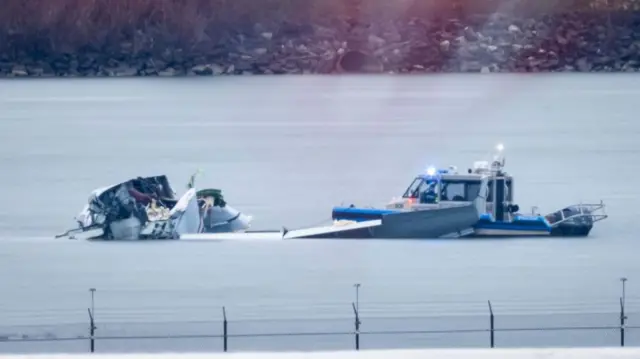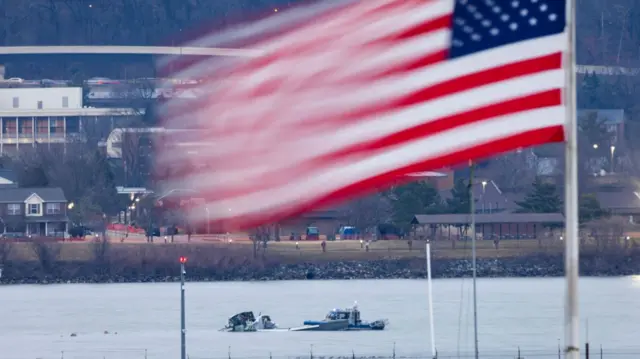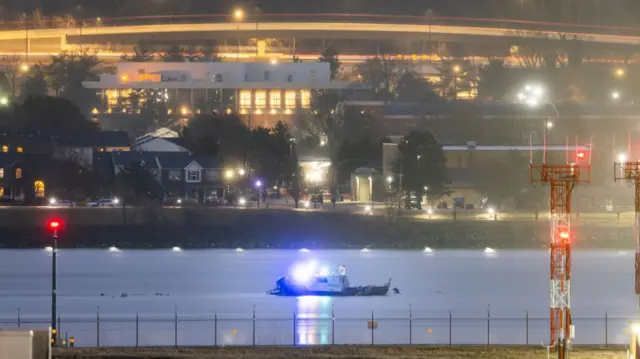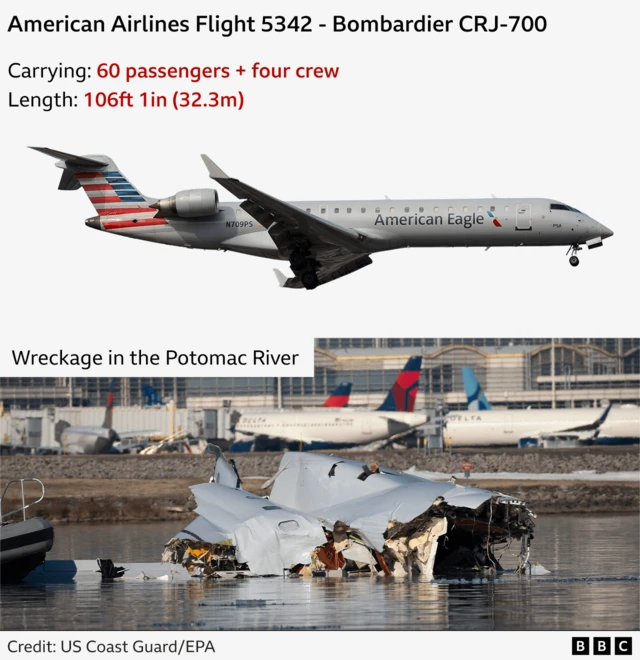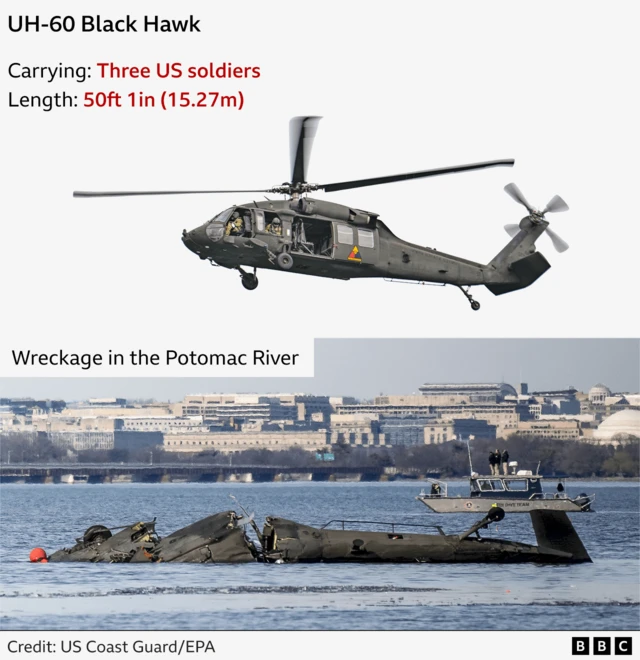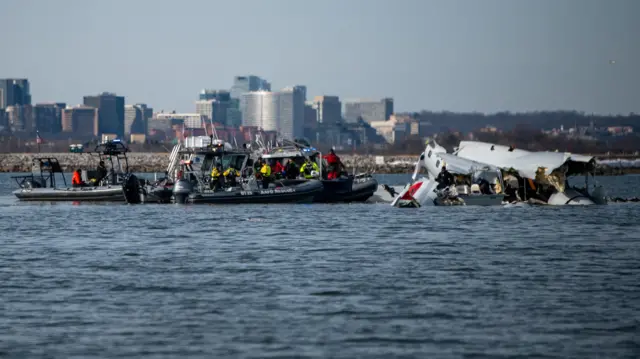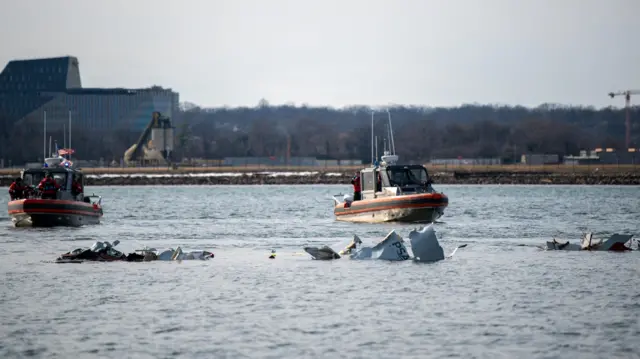Rescue divers working in cold, treacherous waters - professional diverpublished at 16:30 GMT 31 January
 Bernd Debusmann Jr
Bernd Debusmann Jr
US reporter
A few moments ago, I spoke to Brad Thavenet, a professional rescue and salvage diver, who has worked both with FEMA and as a trainer for Dive Rescue International.
Thavenet says that the dive operation to recover debris, evidence and human remains in the waters of the Potomac River is complex, complicated by increases and decreases in depth - as the river is an estuary - and by "entanglement hazards".
"That could be miles of cable and wiring, or jagged metal," he explains. "But there are also hazardous materials, such as jet fuel or black and grey [sewage] water from the flight."
Wet weather forecast in the DC area today could complicate matters further, he adds, by causing run-off from local sewage systems.
Thavenet said that a primary challenge is the cold, dark waters of the Potomac River, which he said would reduce visibility to near-zero.
The rescue divers, who are equipped with communications equipment, would often be guided by operators above-water who have access to sonar imagery.
"They'd be doing a lot of it in the dark, basically, because of the flow of the water," he says. "The communications would allow the divers to get some directions, such as 'go to the right'."
Authorities have confirmed that divers involved in the operating are operating for about 20 minutes at a time - which Thavenet says is standard operating procedure in these conditions.
"It's crucial to avoid burnout in these situations, both of personnel and equipment," he said.





